Презентация human dvelopment lecture 9

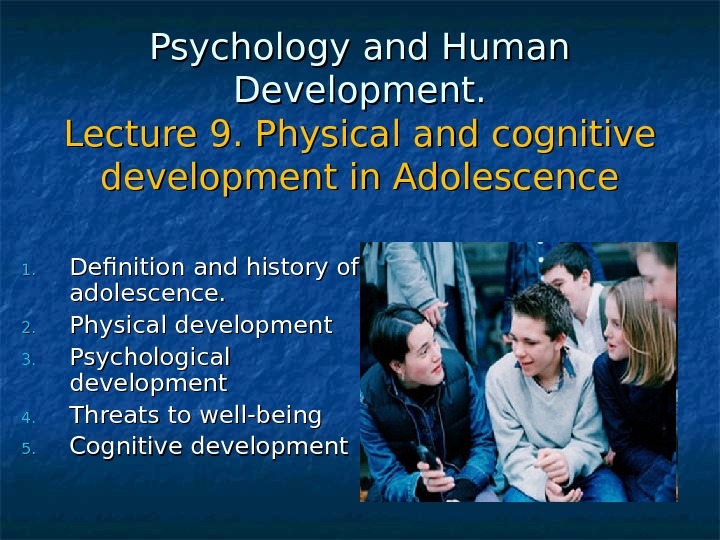
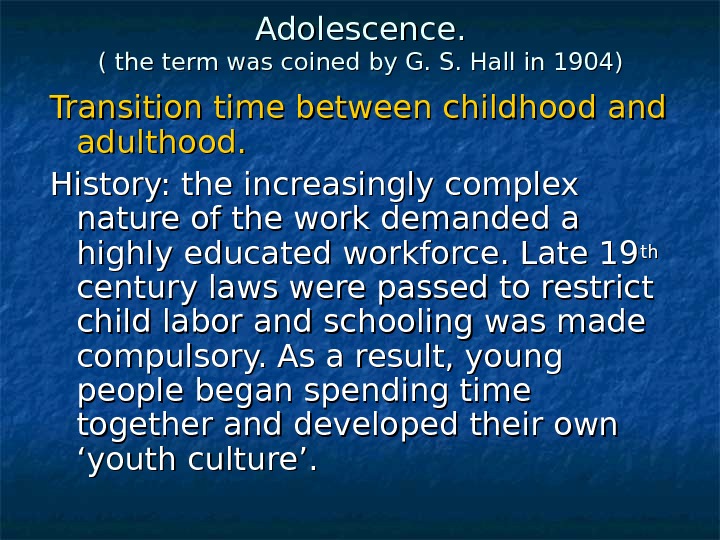
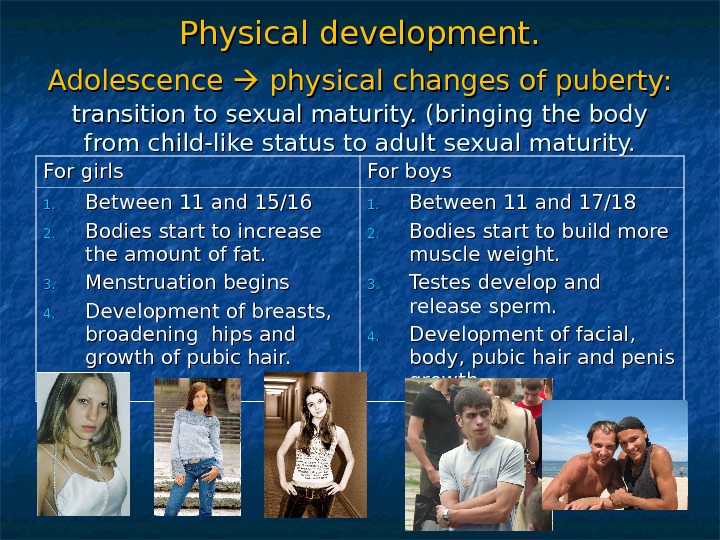
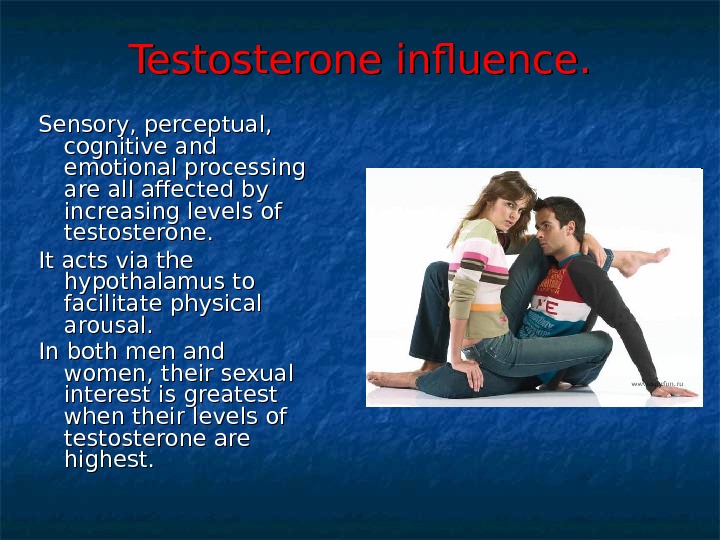
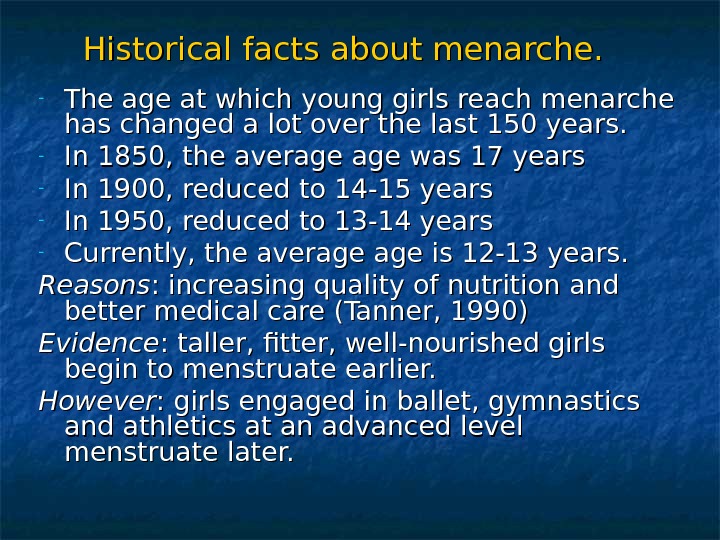
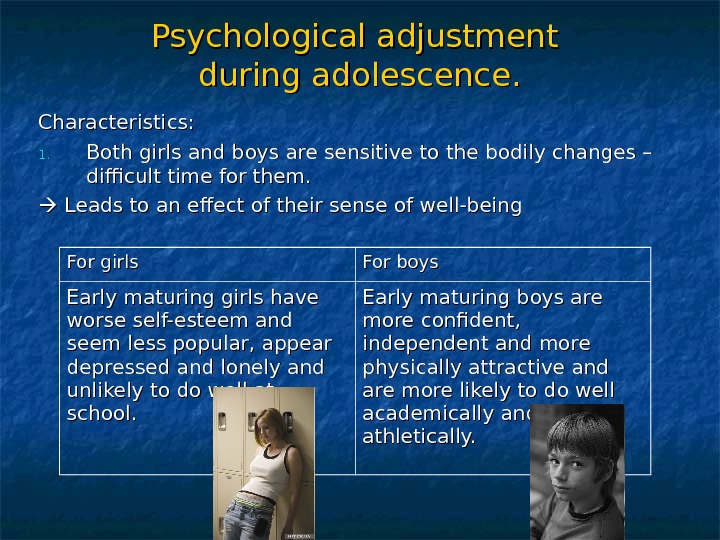
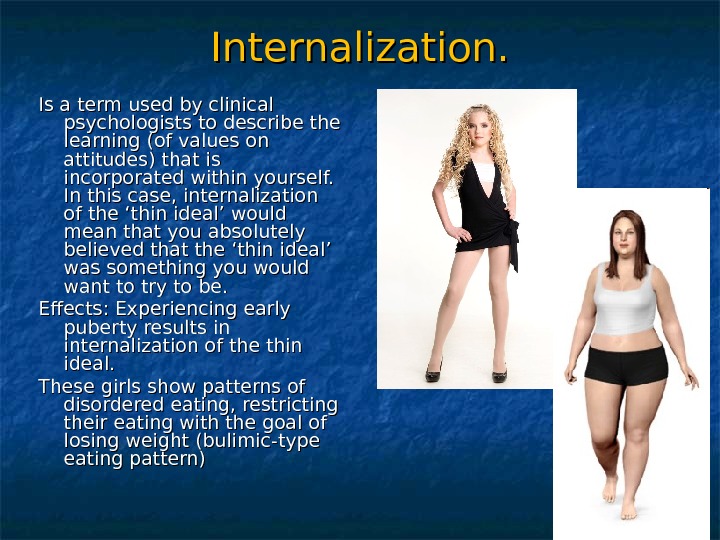
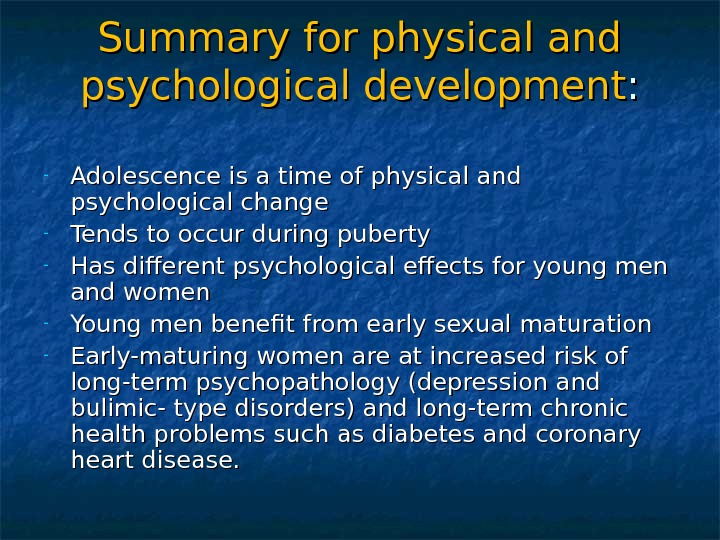
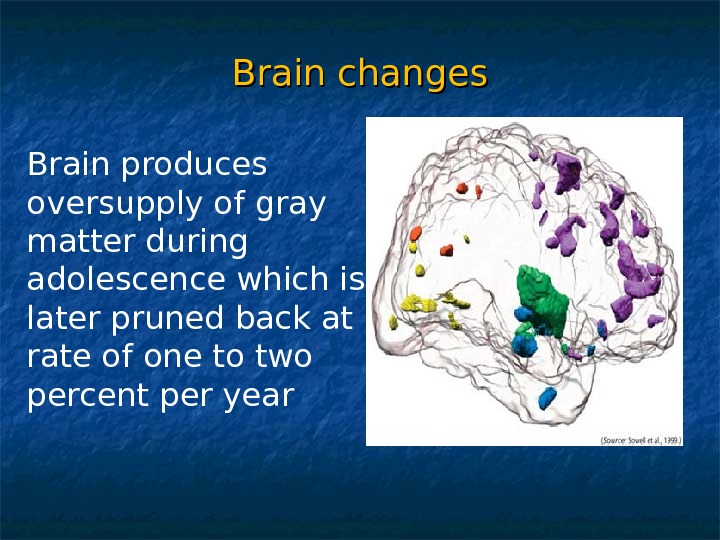
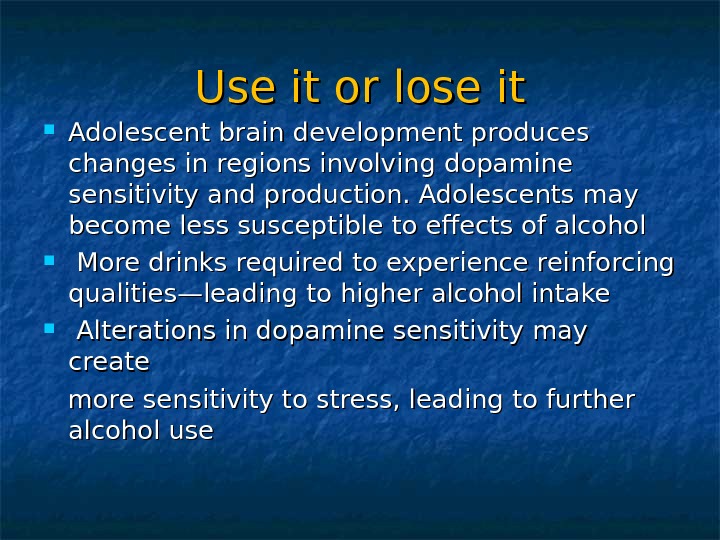
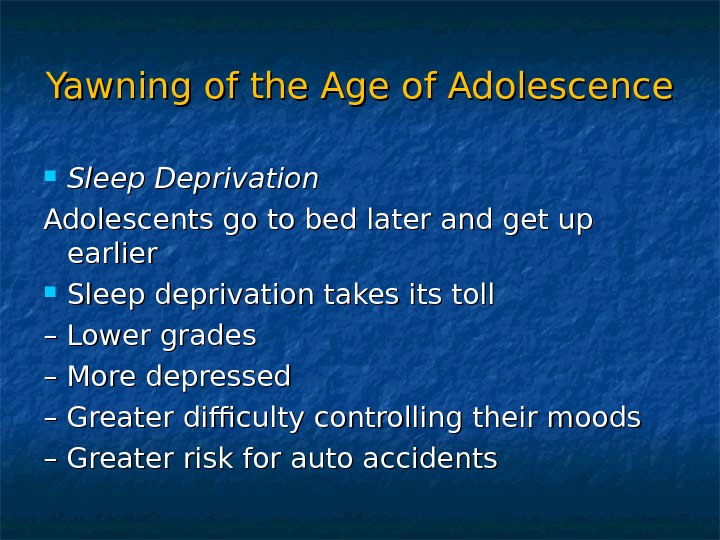
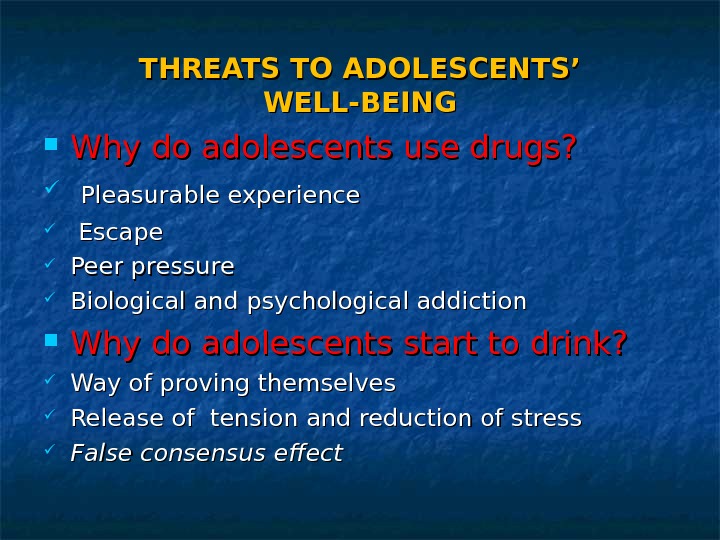
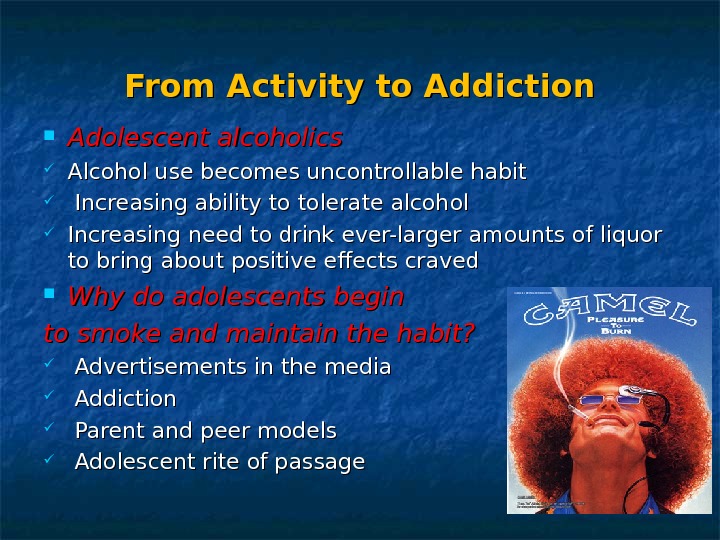
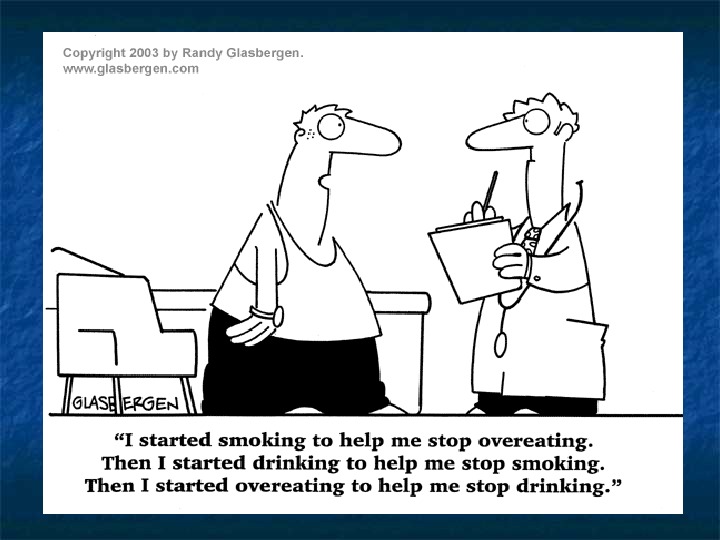
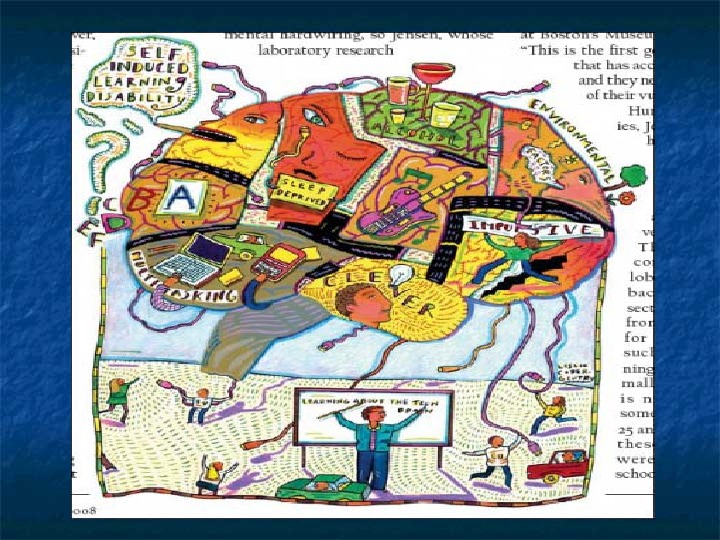
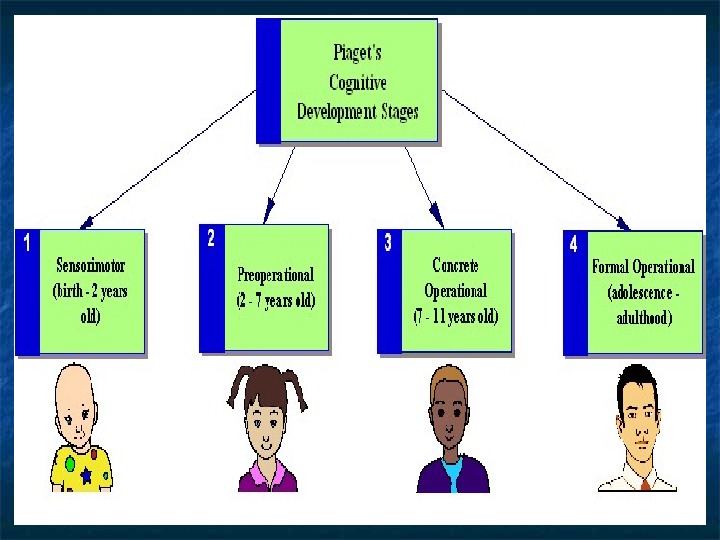
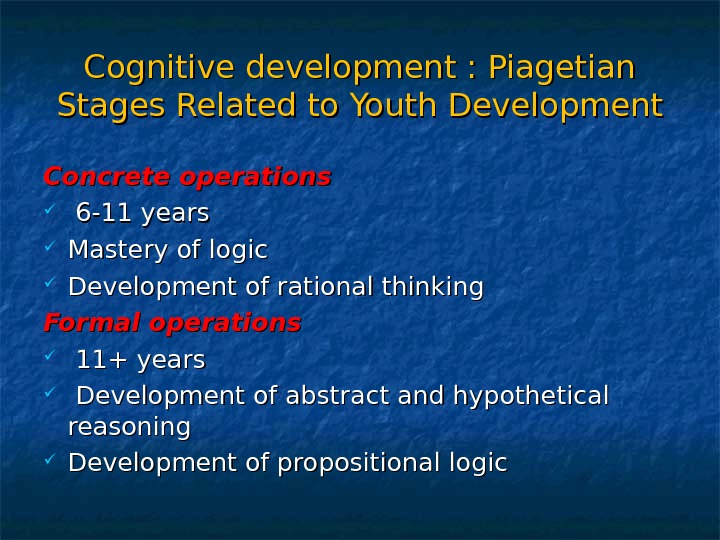
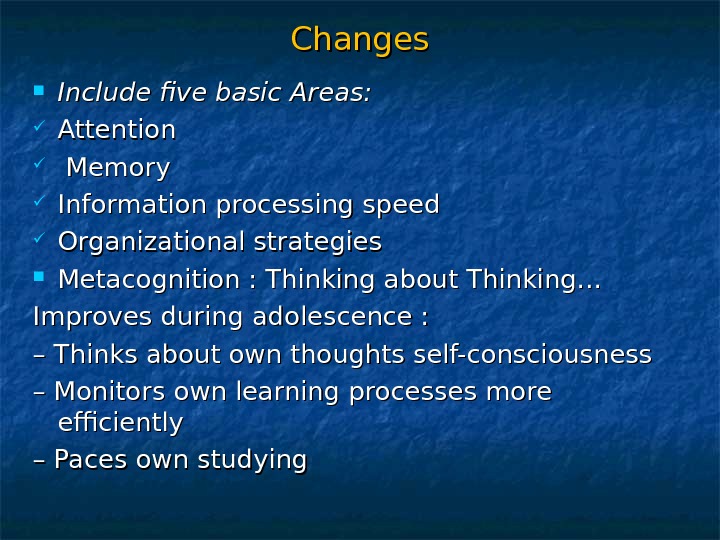
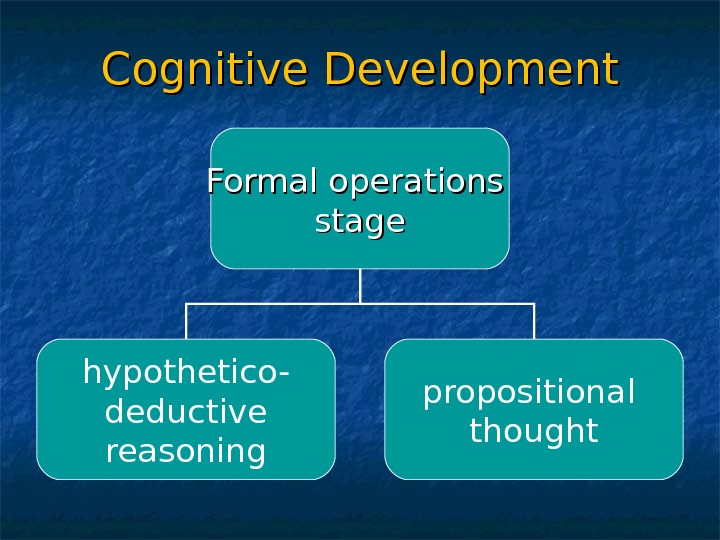


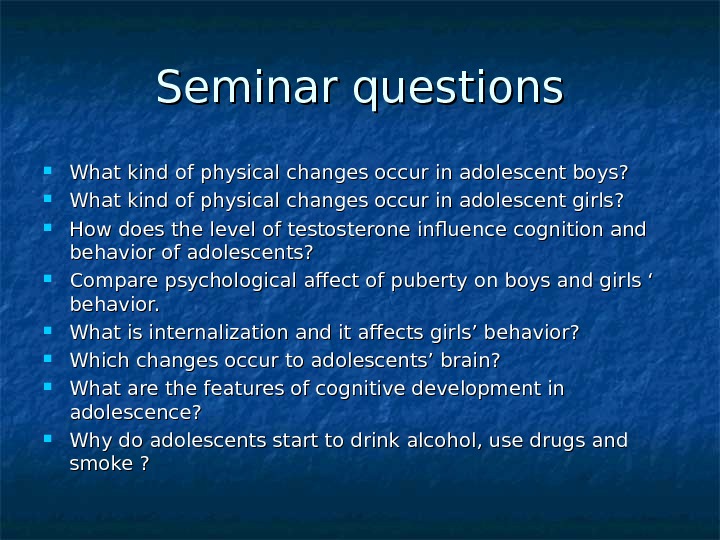
- Размер: 3.8 Mегабайта
- Количество слайдов: 22
Описание презентации Презентация human dvelopment lecture 9 по слайдам
 Psychology and Human Development. Lecture 9 9. Physical and cognitive development in Adolescence 1. 1. Definition and history of adolescence. 2. 2. Physical development 3. 3. Psychological development 4. 4. Threats to well-being 5. 5. Cognitive development
Psychology and Human Development. Lecture 9 9. Physical and cognitive development in Adolescence 1. 1. Definition and history of adolescence. 2. 2. Physical development 3. 3. Psychological development 4. 4. Threats to well-being 5. 5. Cognitive development
 Adolescence. ( the term was coined by G. S. Hall in 1904) Transition time between childhood and adulthood. History: the increasingly complex nature of the work demanded a highly educated workforce. Late 19 thth century laws were passed to restrict child labor and schooling was made compulsory. As a result, young people began spending time together and developed their own ‘youth culture’.
Adolescence. ( the term was coined by G. S. Hall in 1904) Transition time between childhood and adulthood. History: the increasingly complex nature of the work demanded a highly educated workforce. Late 19 thth century laws were passed to restrict child labor and schooling was made compulsory. As a result, young people began spending time together and developed their own ‘youth culture’.
 Physical development. Adolescence physical changes of puberty: transition to sexual maturity. (bringing the body from child-like status to adult sexual maturity. For girls For boys 1. 1. Between 11 and 15/16 2. 2. Bodies start to increase the amount of fat. 3. 3. Menstruation begins 4. 4. Development of breasts, broadening hips and growth of pubic hair. 1. 1. Between 11 and 17/18 2. 2. Bodies start to build more muscle weight. 3. 3. Testes develop and release sperm. 4. 4. Development of facial, body, pubic hair and penis growth.
Physical development. Adolescence physical changes of puberty: transition to sexual maturity. (bringing the body from child-like status to adult sexual maturity. For girls For boys 1. 1. Between 11 and 15/16 2. 2. Bodies start to increase the amount of fat. 3. 3. Menstruation begins 4. 4. Development of breasts, broadening hips and growth of pubic hair. 1. 1. Between 11 and 17/18 2. 2. Bodies start to build more muscle weight. 3. 3. Testes develop and release sperm. 4. 4. Development of facial, body, pubic hair and penis growth.
 Testosterone influence. Sensory, perceptual, cognitive and emotional processing are all affected by increasing levels of testosterone. It acts via the hypothalamus to facilitate physical arousal. In both men and women, their sexual interest is greatest when their levels of testosterone are highest.
Testosterone influence. Sensory, perceptual, cognitive and emotional processing are all affected by increasing levels of testosterone. It acts via the hypothalamus to facilitate physical arousal. In both men and women, their sexual interest is greatest when their levels of testosterone are highest.
 Historical facts about menarche. — The age at which young girls reach menarche has changed a lot over the last 150 years. — In 1850, the average was 17 years — In 1900, reduced to 14 -15 years — In 1950, reduced to 13 -14 years — Currently, the average age is 12 -13 years. Reasons : increasing quality of nutrition and better medical care (Tanner, 1990) Evidence : taller, fitter, well-nourished girls begin to menstruate earlier. However : girls engaged in ballet, gymnastics and athletics at an advanced level menstruate later.
Historical facts about menarche. — The age at which young girls reach menarche has changed a lot over the last 150 years. — In 1850, the average was 17 years — In 1900, reduced to 14 -15 years — In 1950, reduced to 13 -14 years — Currently, the average age is 12 -13 years. Reasons : increasing quality of nutrition and better medical care (Tanner, 1990) Evidence : taller, fitter, well-nourished girls begin to menstruate earlier. However : girls engaged in ballet, gymnastics and athletics at an advanced level menstruate later.
 Psychological adjustment during adolescence. Characteristics: 1. 1. Both girls and boys are sensitive to the bodily changes – difficult time for them. Leads to an effect of their sense of well-being For girls For boys Early maturing girls have worse self-esteem and seem less popular, appear depressed and lonely and unlikely to do well at school. Early maturing boys are more confident, independent and more physically attractive and are more likely to do well academically and athletically.
Psychological adjustment during adolescence. Characteristics: 1. 1. Both girls and boys are sensitive to the bodily changes – difficult time for them. Leads to an effect of their sense of well-being For girls For boys Early maturing girls have worse self-esteem and seem less popular, appear depressed and lonely and unlikely to do well at school. Early maturing boys are more confident, independent and more physically attractive and are more likely to do well academically and athletically.
 Internalization. Is a term used by clinical psychologists to describe the learning (of values on attitudes) that is incorporated within yourself. In this case, internalization of the ‘thin ideal’ would mean that you absolutely believed that the ‘thin ideal’ was something you would want to try to be. Effects: Experiencing early puberty results in internalization of the thin ideal. These girls show patterns of disordered eating, restricting their eating with the goal of losing weight (bulimic-type eating pattern)
Internalization. Is a term used by clinical psychologists to describe the learning (of values on attitudes) that is incorporated within yourself. In this case, internalization of the ‘thin ideal’ would mean that you absolutely believed that the ‘thin ideal’ was something you would want to try to be. Effects: Experiencing early puberty results in internalization of the thin ideal. These girls show patterns of disordered eating, restricting their eating with the goal of losing weight (bulimic-type eating pattern)
 Summary for physical and psychological development : : — Adolescence is a time of physical and psychological change — Tends to occur during puberty — Has different psychological effects for young men and women — Young men benefit from early sexual maturation — Early-maturing women are at increased risk of long-term psychopathology (depression and bulimic- type disorders) and long-term chronic health problems such as diabetes and coronary heart disease.
Summary for physical and psychological development : : — Adolescence is a time of physical and psychological change — Tends to occur during puberty — Has different psychological effects for young men and women — Young men benefit from early sexual maturation — Early-maturing women are at increased risk of long-term psychopathology (depression and bulimic- type disorders) and long-term chronic health problems such as diabetes and coronary heart disease.
 Brain changes Brain produces oversupply of gray matter during adolescence which is later pruned back at rate of one to two percent per year
Brain changes Brain produces oversupply of gray matter during adolescence which is later pruned back at rate of one to two percent per year
 Use it or lose it Adolescent brain development produces changes in regions involving dopamine sensitivity and production. Adolescents may become less susceptible to effects of alcohol More drinks required to experience reinforcing qualities—leading to higher alcohol intake Alterations in dopamine sensitivity may create more sensitivity to stress, leading to further alcohol use
Use it or lose it Adolescent brain development produces changes in regions involving dopamine sensitivity and production. Adolescents may become less susceptible to effects of alcohol More drinks required to experience reinforcing qualities—leading to higher alcohol intake Alterations in dopamine sensitivity may create more sensitivity to stress, leading to further alcohol use
 Yawning of the Age of Adolescence Sleep Deprivation Adolescents go to bed later and get up earlier Sleep deprivation takes its toll – – Lower grades – – More depressed – – Greater difficulty controlling their moods – – Greater risk for auto accidents
Yawning of the Age of Adolescence Sleep Deprivation Adolescents go to bed later and get up earlier Sleep deprivation takes its toll – – Lower grades – – More depressed – – Greater difficulty controlling their moods – – Greater risk for auto accidents
 THREATS TO ADOLESCENTS’ WELL-BEING Why do adolescents use drugs? Pleasurable experience Escape Peer pressure Biological and psychological addiction Why do adolescents start to drink? Way of proving themselves Release of tension and reduction of stress False consensus effect
THREATS TO ADOLESCENTS’ WELL-BEING Why do adolescents use drugs? Pleasurable experience Escape Peer pressure Biological and psychological addiction Why do adolescents start to drink? Way of proving themselves Release of tension and reduction of stress False consensus effect
 From Activity to Addiction Adolescent alcoholics Alcohol use becomes uncontrollable habit Increasing ability to tolerate alcohol Increasing need to drink ever-larger amounts of liquor to bring about positive effects craved Why do adolescents begin to smoke and maintain the habit? Advertisements in the media Addiction Parent and peer models Adolescent rite of passage
From Activity to Addiction Adolescent alcoholics Alcohol use becomes uncontrollable habit Increasing ability to tolerate alcohol Increasing need to drink ever-larger amounts of liquor to bring about positive effects craved Why do adolescents begin to smoke and maintain the habit? Advertisements in the media Addiction Parent and peer models Adolescent rite of passage



 Cognitive development : Piagetian Stages Related to Youth Development Concrete operations 6 -11 years Mastery of logic Development of rational thinking Formal operations 11+ years Development of abstract and hypothetical reasoning Development of propositional logic
Cognitive development : Piagetian Stages Related to Youth Development Concrete operations 6 -11 years Mastery of logic Development of rational thinking Formal operations 11+ years Development of abstract and hypothetical reasoning Development of propositional logic
 Changes Include five basic Areas: Attention Memory Information processing speed Organizational strategies Metacognition : Thinking about Thinking… Improves during adolescence : – – Thinks about own thoughts self-consciousness – – Monitors own learning processes more efficiently – – Paces own studying
Changes Include five basic Areas: Attention Memory Information processing speed Organizational strategies Metacognition : Thinking about Thinking… Improves during adolescence : – – Thinks about own thoughts self-consciousness – – Monitors own learning processes more efficiently – – Paces own studying
 Cognitive Development Formal operations stage hypothetico- deductive reasoning propositional thought
Cognitive Development Formal operations stage hypothetico- deductive reasoning propositional thought
 Hypothetico-Deductive Reasoning the ability to solve problems by using possibilities to test realities; the ability to look at events and consider a number of possible reasons for them occurring; For example, a young person engage in the formal operations stage might view a news report of a break-out of war in a region. They might form hypotheses explaining why war has occurred an have view on possible outcomes.
Hypothetico-Deductive Reasoning the ability to solve problems by using possibilities to test realities; the ability to look at events and consider a number of possible reasons for them occurring; For example, a young person engage in the formal operations stage might view a news report of a break-out of war in a region. They might form hypotheses explaining why war has occurred an have view on possible outcomes.
 Propositional Thought the ability to evaluate logic without needing real-life example to back it up. For example, the young person might develop the skills needed in mathematics to use simples in place of numbers. the ability to deduce truth from logical statements For example, if Steve is taller than Carole and Kim is taller than Steve, who is the shortest person in the group?
Propositional Thought the ability to evaluate logic without needing real-life example to back it up. For example, the young person might develop the skills needed in mathematics to use simples in place of numbers. the ability to deduce truth from logical statements For example, if Steve is taller than Carole and Kim is taller than Steve, who is the shortest person in the group?
 Seminar questions What kind of physical changes occur in adolescent boys? What kind of physical changes occur in adolescent girls? How does the level of testosterone influence cognition and behavior of adolescents? Compare psychological affect of puberty on boys and girls ‘ behavior. What is internalization and it affects girls’ behavior? Which changes occur to adolescents’ brain? What are the features of cognitive development in adolescence? Why do adolescents start to drink alcohol, use drugs and smoke ?
Seminar questions What kind of physical changes occur in adolescent boys? What kind of physical changes occur in adolescent girls? How does the level of testosterone influence cognition and behavior of adolescents? Compare psychological affect of puberty on boys and girls ‘ behavior. What is internalization and it affects girls’ behavior? Which changes occur to adolescents’ brain? What are the features of cognitive development in adolescence? Why do adolescents start to drink alcohol, use drugs and smoke ?

